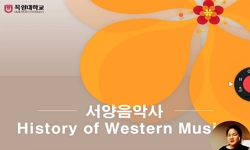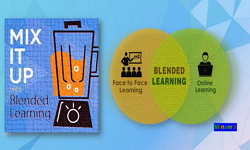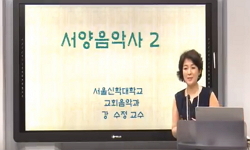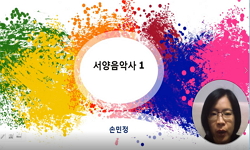The purpose of this study is to develop a blended-learning based teaching method for middle school students on nationalism music, which emerged against Romanticism in the late 19th century, and the prominent group of nationalism composers, the Russia ...
http://chineseinput.net/에서 pinyin(병음)방식으로 중국어를 변환할 수 있습니다.
변환된 중국어를 복사하여 사용하시면 됩니다.
- 中文 을 입력하시려면 zhongwen을 입력하시고 space를누르시면됩니다.
- 北京 을 입력하시려면 beijing을 입력하시고 space를 누르시면 됩니다.
https://www.riss.kr/link?id=T16366672
- 저자
-
발행사항
서울: 상명대학교 교육대학원, 2022
-
학위논문사항
학위논문(석사) -- 상명대학교 교육대학원 , 음악교육전공 , 2022. 8
-
발행연도
2022
-
작성언어
한국어
- 주제어
-
DDC
780.7 판사항(23)
-
발행국(도시)
서울
-
기타서명
A Study on Teaching Method for Nationalism in Music by the Russia Five Using Blended Learning
-
형태사항
80 p.: 삽화; 26 cm.
-
일반주기명
상명대학교 논문은 저작권에 의해 보호받습니다.
지도교수:김미숙
참고문헌 수록 -
UCI식별코드
I804:11028-200000635838
- 소장기관
-
0
상세조회 -
0
다운로드
부가정보
다국어 초록 (Multilingual Abstract)
The purpose of this study is to develop a blended-learning based teaching method for middle school students on nationalism music, which emerged against Romanticism in the late 19th century, and the prominent group of nationalism composers, the Russia Five.
To this end, this study investigated the concept, types, and characteristics of blended learning, explored cooperative learning models for students’ class involvement, and selected models that could be applied to each class topic. In addition, a literature review was conducted to examine the development of nationalist music in the 19th century. A comparative study was also conducted for each platform to select one to be used in the blended learning class.
At the beginning of the study, a teaching plan where three sessions of face-to-face classes are provided with online formative evaluation was developed, which was experimented with two experts including one incumbent middle school music teacher and eight students for validity. As a result, two different problems were identified. First, the duration of 45 minutes per class was too tight to perform all the stages of the Jigsaw Ⅲ model. Second, the core of the class was “content learning,” which could turn into “a game” for the formative evaluation, resulting in the tail wagging the dog.
By resolving such problems based on the Z-type blended learning, where online and offline classes alternate according to the learning content of each class, a five-session teaching plan was developed using three cooperative learning models. The first session is an offline class that uses the STAD model to teach the emergence of nationalism music in the late 19th century and the development in each country, including Russia, Czech Republic, Finland, and Norway. In the second and third sessions, the Jigsaw Ⅲ model is used. The second session is an offline class where an expert leads learning activities on the Russia Five, and the third session provides an online class including peer-tutoring activities within the population. In the fourth and fifth sessions, card news-making activity is conducted on the Russia Five based on the GI model. The fourth session is an online class, where small groups are formed to assign roles and perform exploring and making activities, and the fifth session is an offline class consisting of group presentations and self-evaluation.
For the online class platform, available functions were selected by comparing and analyzing them focusing on accessibility. For group activities, Zoom was selected as the class platform since it offers the Zoom Room function, and ThinkerBell was selected as the activity support platform for its various learning contents on the website.
This study developed blended learning-based teaching and learning contents for music history by utilizing an online learning platform as an alternative to the existing music history class, where students appreciate music after listening to what the teacher has to present. Using blended learning, the scope of learning is expanded through various channels, and learning materials tailored to the needs of each student can be provided, reducing learning deficits. In this regard, even after the COVID-19 pandemic is over, blended learning will be positioned as an important teaching and learning method in education.
In conclusion, the teaching guidance and contents developed in this study are expected to be utilized in blended learning for music and follow-up research. Additionally, the results of this study are expected to be reorganized for the effective classes on the music history of a range of times.
국문 초록 (Abstract)
이 연구는 중학생을 대상으로 블렌디드 러닝을 활용하여 19세기 후반 낭만주의에 대항하여 등장한 민족주의 음악과 대표적인 민족주의 작곡가 그룹 러시아 5인조에 대한 지도방안 개발을 목...
이 연구는 중학생을 대상으로 블렌디드 러닝을 활용하여 19세기 후반 낭만주의에 대항하여 등장한 민족주의 음악과 대표적인 민족주의 작곡가 그룹 러시아 5인조에 대한 지도방안 개발을 목적으로 하고 있다.
먼저 블렌디드 러닝의 개념과 유형, 특징에 대해 알아보았으며, 학생참여수업을 위해 협동학습 모형들을 탐색 후, 각 차시 별 수업 주제에 적용할 수 있는 모형들을 선택하였다. 19세기 민족주의 음악과 발전 양상을 확인하기 위해 문헌연구를 진행하였다. 또한, 블렌디드 러닝 수업에 활용할 플랫폼의 선택을 위해 각 플랫폼 별 비교연구를 진행하였다.
연구 진행 초, 3차시 수업으로 대면수업을 전제로 형성평가만을 온라인으로 실시하는 지도안을 구성하여 현직 중학교 음악교사 1명을 포함한 전문가 2명과 학생 8명을 대상으로 지도안 검증을 진행하였다. 지도안 검증 결과 두 가지의 문제점을 확인할 수 있었다. 첫째, 한 차시 45분의 시간은 Jigsaw Ⅲ 모형의 모든 단계를 진행함에 있어 굉장히 촉박한 시간이며, 둘째, 수업의 핵심은 ‘내용 학습’이며 형성평가를 위한 ‘게임’으로 주객전도 될 위험이 있다는 것이었다.
이를 수정 및 보완하여 차시 별 학습 내용에 따라 온·오프라인 수업을 번갈아 진행하는 Z형 블렌디드 러닝을 바탕으로 세 가지의 협동학습 모형을 활용하여 총 5차시의 수업 지도안을 구성하였다. 1차시는 오프라인 수업으로, STAD 모형을 활용하여 19세기 후반 민족주의 음악의 등장과 러시아, 체코, 핀란드, 노르웨이 각 나라 별 발전양상에 대해 학습한다. 2~3차시는 Jigsaw Ⅲ 모형을 활용하여 2차시는 오프라인 수업에서 러시아 5인조에 대한 전문가 학습활동을 진행하며, 3차시는 온라인 수업으로 모집단 내 또래교수 활동을 진행하도록 구성하였다. 4~5차시는 학습한 내용들을 바탕으로 GI 모형을 적용하여 러시아 5인조에 대한 카드뉴스 만들기 활동을 진행한다. 4차시는 온라인 수업으로 소집단 형성 후, 역할분담 및 탐구·제작활동을 진행하며, 5차시는 오프라인 수업으로 모둠 별 발표 후 자체평가를 진행하도록 수업을 구성하였다.
수업에 활용하는 온라인 수업 플랫폼은 접근성을 우선으로 활용 가능한 기능들을 비교·분석하여 선정하였다. 모둠 활동을 위하여 소회의실 기능이 있는 Zoom을 수업 진행 플랫폼으로 선정하였으며, 활동 보조 플랫폼으로는 사이트 내 다양한 학습 활용 콘텐츠가 있는 ThinkerBell을 선택하였다.
이 연구에서는 교사의 일방적인 내용전달 후 단순한 감상에 그치는 기존 음악사 수업의 대안으로 온라인 학습 플랫폼을 활용하여 블렌디드 러닝으로 음악사를 지도하는 교수·학습 콘텐츠를 개발하였다. 블렌디드 러닝을 활용한다면 다양한 채널을 통해 학습을 함으로써 학습의 장이 확대되며, 학생 개개인의 요구에 맞는 학습 자료를 제공할 수 있어 학습의 결손을 감소시킬 수 있다. 따라서 팬데믹 상황에 끝난 후에도 교육에 있어서 블렌디드 러닝은 중요한 교수·학습 방법으로 자리매김할 것이다.
따라서 이 연구를 통해 개발된 지도방안과 콘텐츠가 음악 수업에 있어 블렌디드 러닝의 활용과 다양한 온라인 수업 콘텐츠 개발을 위한 다양한 후속 연구에 도움이 되길 바라며, 나아가 다양한 시대의 음악사 수업에 활용될 수 있도록 재구성되어 효과적인 음악사 수업이 이루어질 수 있기를 기대한다.
목차 (Table of Contents)
- 차 례
- 표 차례 ⅰ
- 그림 차례 ⅰ
- 국문 요약 ⅲ
- 차 례
- 표 차례 ⅰ
- 그림 차례 ⅰ
- 국문 요약 ⅲ
- 1. 서론 1
- 1.1. 연구의 필요성 및 목적 1
- 1.2. 연구내용 및 방법 4
- 1.3. 선행연구 고찰 5
- 2. 이론적 배경 10
- 2.1. 블렌디드 러닝 10
- 2.2. 협동학습 16
- 3. 블렌디드 러닝을 활용한 수업의 설계 21
- 3.1. 수업 계획 21
- 3.2. 수업지도안 28
- 3.3. 온라인 학습 플랫폼을 활용한 활동 60
- 4. 결론 및 제언 70
- 참고문헌 74
- ABSTRACT 78












